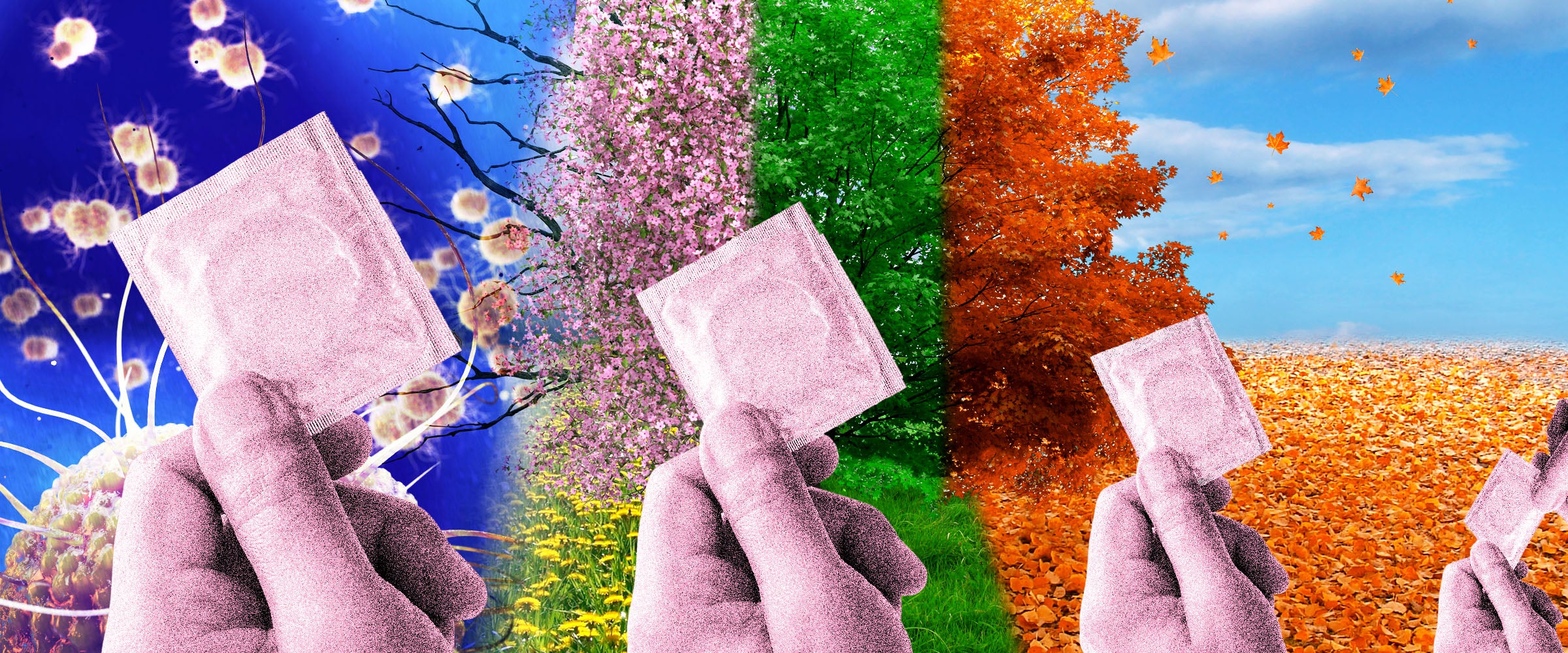As we exit that time of year commonly referred to as allergy season, it’s important to note that, along with colorful leaves and decent weather, we’re also leaving behind gonorrhea season.
Yes, you read that correctly: Gonorrhea season is over, so throw away your condoms and start raw!
I’m kidding, man.
On a more serious note, according to The Cut, sexually transmitted infections (STIs) thrive in the autumn months, according to a study published last month in PLoS Pathogens. “It seems nearly all infectious diseases tend to wax and wane depending on the time of year,” they reported. “The study used data from 100 previous studies to describe whether 69 diseases [Editor’s note: Nice!] become more prevalent in spring, summer, autumn or winter.”
According to PBS, the fluctuations have less to do with our susceptibility to diseases and more to do with changes in climate. “It’s not that we are vulnerable at a particular time of year and healthy at another,” Micaela Martinez, an infectious disease ecologist at Columbia University’s Mailman School of Public Health and the study’s author explained to PBS. “We’re restructuring throughout the year. And the identity of the thing we’re vulnerable to changes with the seasons.”
But even though humans may not be seasonal maters per se, according to the same PBS article, even a slight uptick in sex during the summer months could spur outbreaks of gonorrhea, genital herpes or syphilis. Noel Brewer, a professor of health behavior at the University of North Carolina at Chapel Hill, agrees. “I assume to some extent it’s related to behavior,” says Brewer. “Perhaps people hook up more in the summer. Research shows that people are more likely to get angry and violent in the summer heat, and perhaps they’re more likely to be aroused in other ways, too.”
Surprisingly, this isn’t the first time scientists have noted that STDs are seasonal: Way back in 1978, researchers noted that a seasonal peak in late summer and early autumn was observed for most STDs. “These observations indicate the importance of a comprehensive approach when attempting to compile accurate statistics on selected epidemiological aspects of sexually transmitted diseases,” write the study’s authors.
As for what this new research means for helping to prevent future outbreaks, Martinez told PBS, “Knowing when certain diseases are in season could help doctors quickly and effectively treat chronic infections that tend to flare up at certain times of the year, like herpes.”
Speaking of small blisters that pop and leave sores that ooze or bleed, herpes season hits unprotected sexually active genitals in Spring 2019. Enjoy!

